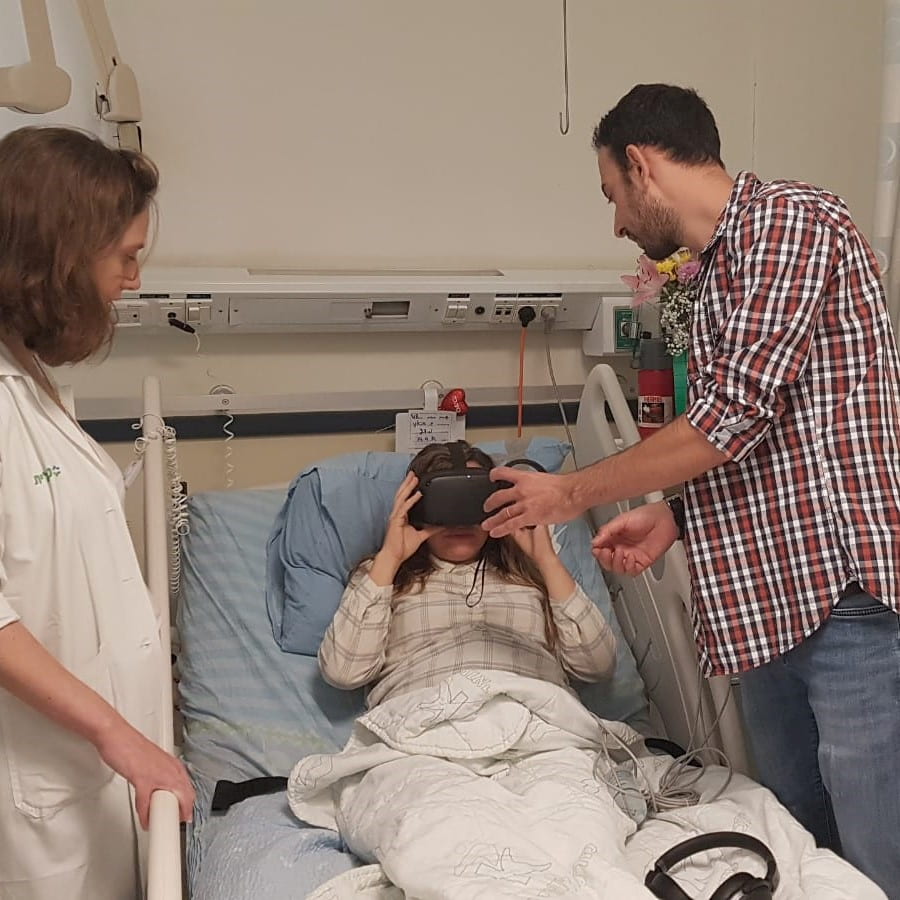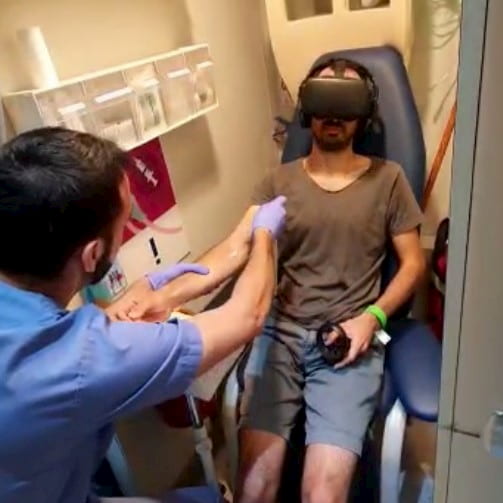Virtual Reality offers advantages that extend well beyond mere entertainment. Since 2014, our VR solutions have been utilized in a number of medical applications, and certified by the Helsinki Ethics Committee at the Kaplan Hospital. Our VR solutions are applicable to the following classes of medical applications:


Our Out-of-Body VR technology is currently used at the Kaplan Hospital for the treatment and care of high-risk pregnant women. Our VR experiences allow the patient to be distracted from their high-pressure environment.
This in turn helps them achieve a state of mind that is more conducive to a healthy pregnancy. Patients consistently report feeling less stressed, calmer and less anxious.
By comforting and calming the patient in this manner, medical professionals are able to obtain true readings from the patient and the baby, including blood pressure, heart rates and blood saturation. These baseline readings are therefore achieved without the influence of transient effects of stress or anxiety.
The ECV is a procedure carried out to avoid high-risk breech birth, where a baby is born head-first instead of buttocks-first.
Our VR technology is used to calm the patient during the ECV to avoid muscular tension, high-tonus and uterus contraction during the procedure.
Patients consistently report feeling calmer and less conscious of the stress-inducing surgical procedure as a result of our technology.



Our VR solutions can be used to distract and calm children during short-term procedures so as to minimize emotional response and resistance.
This includes procedures such as limb salvage, limb lengthening and blood transfusion.
It can also be used in the practice of counselling and the treatment of depression.
Injections and other invasive treatments may be highly anxiety-inducing for needle-phobic patients.
By distracting such patients with our Out-of-Body VR experiences, the brain’s instinctive flight response can be avoided.
Thus, such procedures may be performed with minimal resistance.


